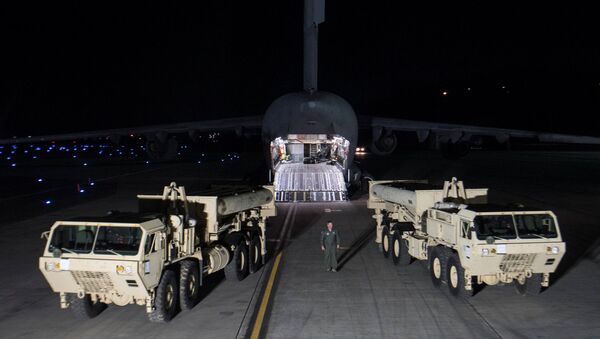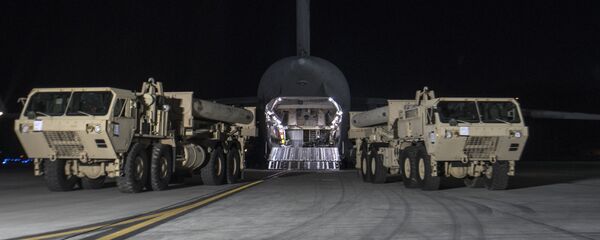Deployment deadlines
The South Korean Defense Ministry was quoted as saying in local media reports last month that THAAD could be stationed by late June at the earliest.
The deployment of THAAD parts in Gyeonggi province came after North Korea had fired on Monday four ballistic missiles, three of which landed in Japan's exclusive economic zone. It also coincided with annual military exercises by the United States and South Korea.
A US Army in South Korea representative though told Sputnik on Tuesday that the deployment was carried out according to earlier agreements and was not linked to the aggravation of the situation in the region.
"In the evening [Korean time] on March 6, parts of THAAD arrived at the Osan Air Base, Gyeonggi province, and it has nothing to do with the current White House statement; and it is just a phase of the process of missile defense systems deployment, an agreement on which had been reached between [South] Korea and the United States. There is no connection between these two events, the parts of THAAD are being supplied in accordance with the agreements reached in July last year," the representative said.
Beijing, Moscow ready for countermeasures
On Tuesday, Viktor Ozerov, chairman of the defense committee in the Russian upper house of parliament, said the General Staff would "conduct an analysis, draw conclusions, and present to the leadership of the country proposals for response measures."
Chairman of the Russian lower house of parliament's international affairs committee Leonid Slutsky told reporters that THAAD deployment went beyond containment of North Korea and could lead to the loss of strategic balance.
A senior Russian Foreign Ministry official told Sputnik on Tuesday that Moscow would take into account the anti-missile system deployment, and review its military planning basing in a relevant way.
"We will certainly take these actions into account in our foreign policy activities… We will of course take this into account in military planning," Department for Nonproliferation and Arms Control (DNAC) Director Mihail Uliyanov said.
China's Foreign Ministry spokesman Geng Shuang said Tuesday that Beijing was against the installment of the US systems in South Korea and would protect its interests.
"We solemnly object to South Korea and the U.S.' deployment of THAAD and will resolutely take necessary actions in order to safeguard our security interests," Geng was quoted as saying by the Yonhap news agency.
The ministry's spokesman also called on the sides to halt the THAAD deployment process immediately and "not deviate to the wrong path any further."



